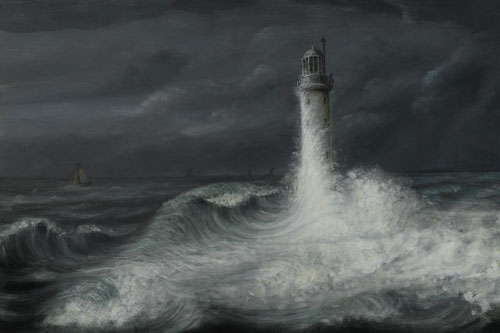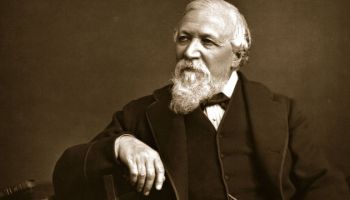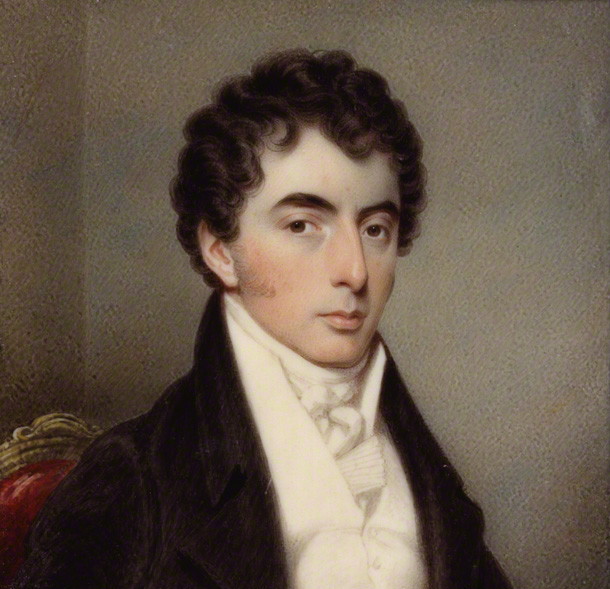Critical Analysis of The Inchcape Rock:
Inchcape rock is a story of a rock that turns the plot altogether. It deals with the tying of the bell by Abot of Aberbrothok along with cutting of the bell by Sir Ralph who then is victimised by his own bad deeds. It shows the humanity between two persons. Thus are deeds in our lives telling us who we are in reality.
Inchcape Rock is a popular poem by Robert Southey about the Inchcape Rock Legend, a reef which is situated in the North Sea, close to the coastal region of Angus in Scotland. The Inchcape Rock is known for its infamy as causation for shipwreck.
This poem by Robert Southey revolves around the famous folktale of an Abbot, a monk who placed a bell on the reef to issue a warning to seamen and seafarers about the impending danger during storms. According to the folktale, whenever the bell used to ring, the seafarers used to bless the Abbot’s wisdom and thank him for saving them from danger. But a sea robber named Ralph cut down the bell to earn money and treasures from the ships that fatally crashed against the rock. However, a day came when Ralph’s vessel too encounters a storm and crashes against the rock. This is when he hears death bells ringing.
Annotations of The Inchcape Rock:
The First Stanza describes the calm state of the sea.
The Second Stanza describes the Inchcape Rock on which the waves are gently moving without making any impact on the Inchcape Bell.
The third stanza talks about the wise Abbot of Aberbrothok who had placed the bell on the Rock to prevent ships from getting shipwrecked during storms and gales.
The fourth Stanza describes that When the Rock was full of water by the strong waves during high tide; the bell would ring and warn the sailors against the Rock.
The fifth stanza is cheerful in tone. It is a joyful day where the sun was shining brightly and sea birds were circling above, screaming.
The sixth stanza speaks about the buoy which looked like a dark, visible speck on the green ocean.
Stanza seven is about Ralph’s excitement experiencing the pleasant day in the spring season.
We find Ralph looking at the Inchcape Rock with his eyes fixed on it in the eighth stanza.
In the ninth stanza, we find the men had already lowered the boat and they are reaching Inchcape Rock.
In the next stanza, we find the bell sinking down making a sound. There were bubbles bursting all around.
In the eleventh stanza, we find the rover becomes rich by looting the wealth and treasures from the shipwrecked ships.
The twelfth stanza is about a day where the sun could not be seen.
The Rover is seen standing on the deck in the thirteenth stanza. It is dark that he is not able to see the land.
The next stanza is about the sailors of Ralph who are a little remorseful about cutting down the Inchcape Bell.
In the fifteenth stanza, the ship of the Rover too crashes against the Inchcape Rock.
In the sixteenth stanza, Ralph is seen cursing himself in despair and tearing up his hair in frustration. Meanwhile, the waves have started to engulf the ship and it starts to sink beneath the high tide.
In the last stanza of the poem, Inchcape Rock, Ralph the Rover can hear a ‘dreadful’ sound of a ringing bell which resembles the sound of the Inchcape Bell but is actually the death knell, rung by the Devil Himself. The Rover finally pays for his own deeds.
Poetic Devices in The Inchcape Rock:
Metaphor:
A metaphor is that figure of speech where comparison of two different things are implied but not clearly stated. Example of metaphor in the poem is given below,-
“A sound as if with the Inchcape Bell
The Devil below was ringing his knell.”
The Inchcape Rock is written in the form of a ballad interwoven with a number of poetical devices to convey a moral lesson- ‘As you sow, so shall you reap.”
Personification:
Personification is when a non-human is given qualities and/or abilities normally owned known by humans. In Robert Southey’s poem “The Inch-cape Rock” he uses personification to describe spring.
“He felt the cheering power of spring.”
Spring can not cheer but humans are able to cheer.
A metaphor uses an analogy to relate two things that otherwise might not be related. In Robert Southey’s poem he uses the metaphor;
“A sound as if with the Inch-cape Bell, The Devil below was ringing his knell.”
In this manner, the reader has two thoughts, one that the bell rings as a haunt to the bad deed the man had done, and to describe that the man who had removed the bell is descending into hell. The poem also has irony within. It is ironic that the very man who took the bell should suffer the same fate as he had prepared for others by the bells removal.
A ballad is a long, narrative poem that tells a story. The Inchcape Rock tells the story of a wicked pirate who cuts off the bell on the Inchcape Rock, which was put there by an abbot. He did so out of selfish motive and envy. In the end his own ship crashes against the Rock and is drowned in the sea. The moral of the poem goes like this that ‘he who digs a pit for others, falls into it.’ Thus the ballad has adventure, heroism, jealousy and a moral.
A ballad is traditionally sung by a wandering musician. Here, each stanza of the first line rhymes with the second and the third with the fourth. An example is given below:
“The buoy of the Inchcape Bell was seen
A darker speck on the ocean green;
Sir Ralph the Rover, walked his deck
And he fixed his eye on the darker speck.”
The Theme of The Inchcape Rock:
The basic theme of the poem is that those who do bad things will ultimately be punished accordingly and poetic justice was done. The poem, The Inchcape Rock, teaches a moral lesson- As you sow, so shall you reap. The poem proves the principle that crime gets its own punishment.
As the story moves ahead, Ralph, the Rover, grows extremely rich and settles in Scotland. But nature sooner or later pays you for all your wrong deeds. This was also true in the case of Sir Ralph. While he was aboard on his ship, one night the moon was absent. Sir Ralph incessantly enthused his sailors by saying that moon light will appear soon and they should not fear. The sailors followed the orders and the ship continued moving. With an unforeseen turn of events, the ship hit the “Inchcape Rock” and slowly started drowning in the water. While drowning the sailors and all the people aboard wished that the bell was there on the rock because if the bell would have existed, such a mishap would not have taken place. When Sir Ralph drowns he feels miserable to have removed the bell from the rock because he was himself paying the price of the wrong deed he once committed. Though the bell was not there Sir Ralph could hear the noise of the bell in his head banging continuously. He felt that the ringing bell was telling him that look you are paying for your own wrong deeds.
The Tone of The Inchcape Rock:
The poem is in a narrative tone that tells a story.
The poet has used eloquent and narrative techniques to augment the effect of the poem. The poem, The Inchcape Rock, provides a fine verbal image of the calm atmosphere of the sea. Then the Inchcape Rock is presented, the old Abbott’s plan of putting a bell. This way the ballad slithers from one incident to another very smoothly, providing a vivid picture into the reader’s minds.
Example of Visual images in the poem:
1. The sun in heaven was shining gay.
2. The waves flowed over the Inchcape Rock.
Examples of Sound images in the poem:
1. And over the waves, its warning rung.
2. The sea birds screamed as they wheeled round,
And there was ecstasy in their sound.
Central Idea of The Inchcape Rock:
The central idea of the poem is that ‘he who digs a pit for others, falls into it.’
The “Inchcape Rock” is based on the idiom “you will reap what you sow”, “tit for tat”, “what goes around comes around” and the like. If you sow happiness, you will get happiness and if you sow sadness, you will get sadness indeed. This is, in fact, the rule of nature. The Inchcape rock near the coast of Scotland is actually the central theme of this essay. This precise rock in Scotland is a huge and perilous rock which can be not noticed in hot and sunny days but a ship could meet with an accident with the rock during storms because it is not perceptible at that time. The Abbot of Aberbrothok hanged a bell on the rock as a result of which the bell ranged continuously till the storm was present and thus the sailors avoided the way where the bell ranged. Ralph the Rover, a pirate decided to free the rock from the bell because he used to loot the ships which were destructed as a result of the damages caused by hitting the Inchcape rock
Conclusion
The poem, The Inchcape Rock concludes by saying that As you sow, so shall you reap. The poem proves the principle that crime gets its own punishment. The Rover cuts off the bell to peeve the good Abbot and the other helpless sailors but in the end, he falls into his own laid trap. Remorse and regrets later overtake him but it was too late already.
Some online learning platforms provide certifications, while others are designed to simply grow your skills in your personal and professional life. Including Masterclass and Coursera, here are our recommendations for the best online learning platforms you can sign up for today.
The 7 Best Online Learning Platforms of 2022
- Best Overall: Coursera
- Best for Niche Topics: Udemy
- Best for Creative Fields: Skillshare
- Best for Celebrity Lessons: MasterClass
- Best for STEM: EdX
- Best for Career Building: Udacity
- Best for Data Learning: Pluralsight
















